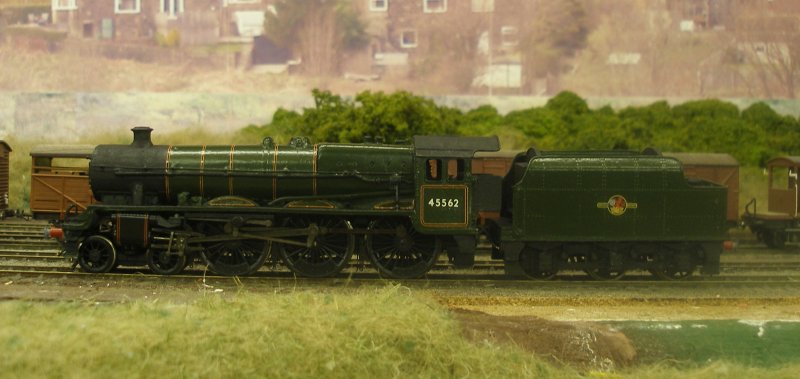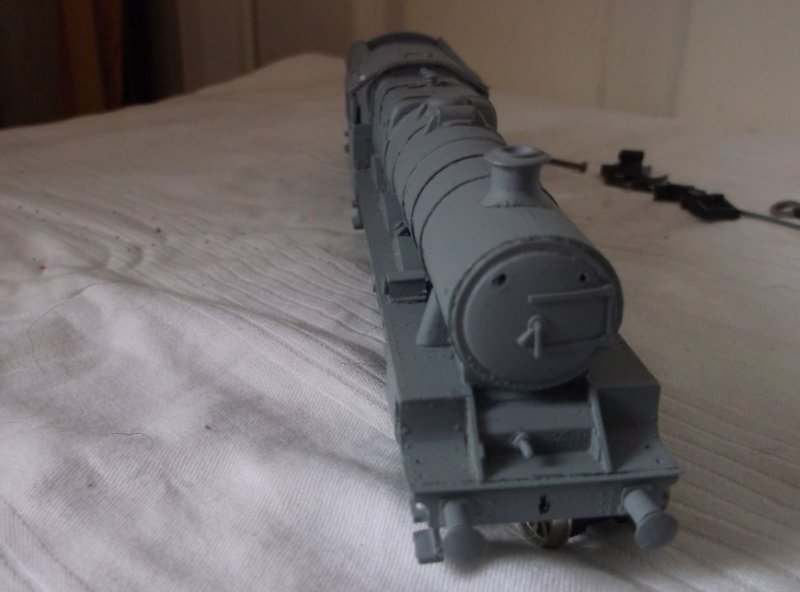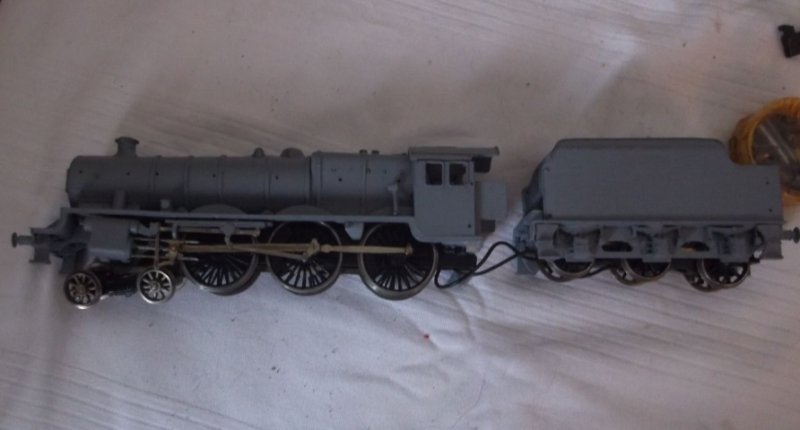
eBay K's Jubilee restoration
eBay remains on of great model railway resources. On 19th July I successfully bid for an incomplete K's LMS Stanier Jubilee.
This was substantially complete, but lacked handrails, reversing rod, injector piping, etc., and the plastic tender underframe was present but broken, possibly as a result of the heavy whitemetal tender being dropped.
The chassis was complete, although with some errors in the way the valve gear was assembled. It also had the original K's motor and plastic gear wheel. Clearly there had been issues with small radius curves, and the flanges on the centre driving wheels had been turned off.
I already had a spare Bachmann current Jubilee chassis to hand, and a marrying of the working chassis with the heavy whitemetal body has resulted in a smooth and strong runner. The photos show the state of the model when successfully bid for on 19 July, and again on 11th August after the transfers had been applied, but the front number plate and nameplate had still not been added. Also at this stage the tender still required a coal bunker, but sits comfortably on a Comet tender underframe.
The loco selected for modelling is 'Alberta', No. 45562. The last photo I have seen of her is at Tyseley when she was in transit to the scrap yard, and had stopped off in Birmingham for parts to be removed, including the chimney. This clearly shows a lined loco coupled to an unlined riveted tender - what you see on the model. However further research shows 'Alberta' cleaned for rail fan trips prior to withdrawal still with an unlined tender, but clearly of the welded pattern. So probably the wrong type of tender, but painted correctly for either type! The K's kit also features the smaller Stanier 3,500 gallon tender with a 6'6" x 6'6". I suspect that as locos were withdrawn from the early 60s onwards that the larger 4,000 gallon tenders would have been retained, but I've kept for this model as a representative of the type, as all my other locos have the 4000 gallon type as supplied by Hornby and Bachmann.
The first image shows the model as advertised on eBay. Points to note are that the flanges on the centre Romford wheels have been turned off, the combination rod has been fitted upside down (so the two holes are at the bottom), the cab has holes for the handrails on the cab side and not on the recess for the cab doors, and pick-up is from the tender only.
It is apparent from the three quarters front view below that there is no numberplate and that the smokebox door handles are of the cast variety. No handrails are fitted, although the holes are present both in the smokebox door and on the front footplating. Note the quiet chunky boiler bands.
The tender is a pretty heavy piece of kit, and one can understand why K's may have baulked at providing a bunker and tunnel for the fireman's set of tools.
From the image below it is apparent that the original plastic K's tender underframe is not attached. This had clearly been assembled and then dropped at some time, as the underframe had broken around both sets of mounting screw holes. Also note that the driver's cab steps are missing.
Initial attention focused on the loco and tender chassis to see whether these could be easily fettled to make a 'runner'. The chassis has the original K's motor and plastic gear wheel, and ran. A Guagemaster DCC socket was quickly fitted and a spare decoder fitted to assess whether this set-up would work easily in DCC. The motor didn't run well in DCC (although tolerably in DC). Not knowing the amperage of the motor and not wanting to damage the chip, I decided that the chassis would probably need remotoring. It also needs new centre wheels (which are in stock), the combination rod reversing, and pick-ups and brake gear fitting.
As it so happened, a number of Hornby and Bachmann chassis' in the 'spares or repairs' category had recently been acquired from eBay and fettled over the last few weeks, and it seemed logical to use one of these. For now better reason that it was immediately to hand, I selected the Bachmann chassis. The following images show the loco now painted and lined in operation on 11 August. At this stage the loco still needs the numberplate to be numbered, the internal bunker to be fitted, and its new 'Alberta' nameplates.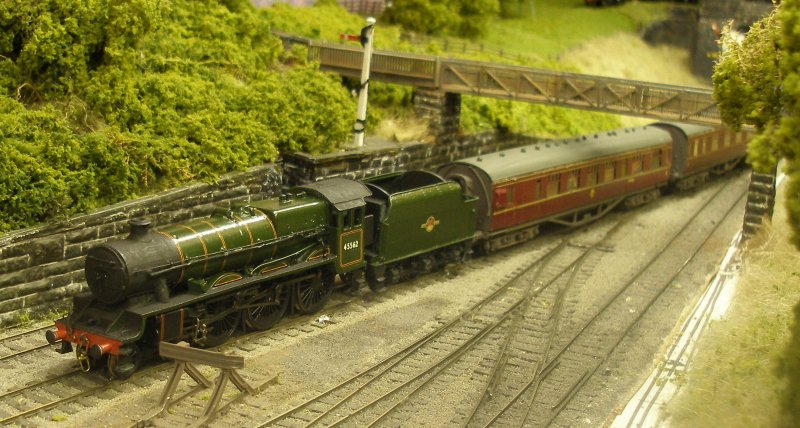
The absence of the internal bunker is apparent in the view below.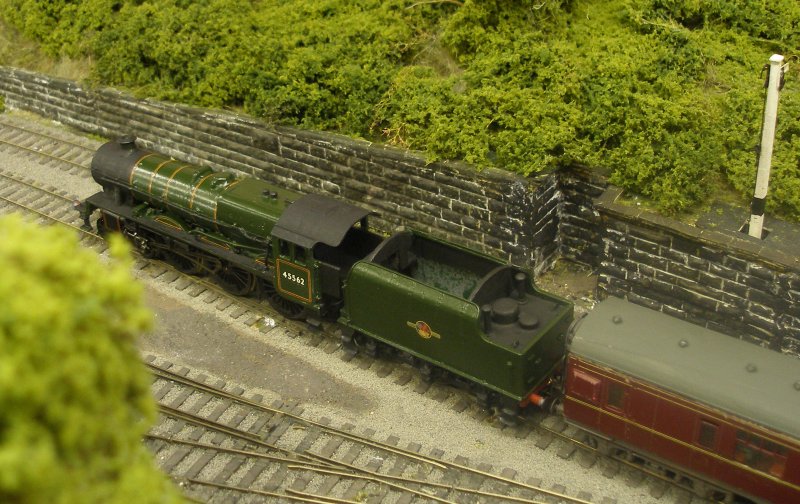
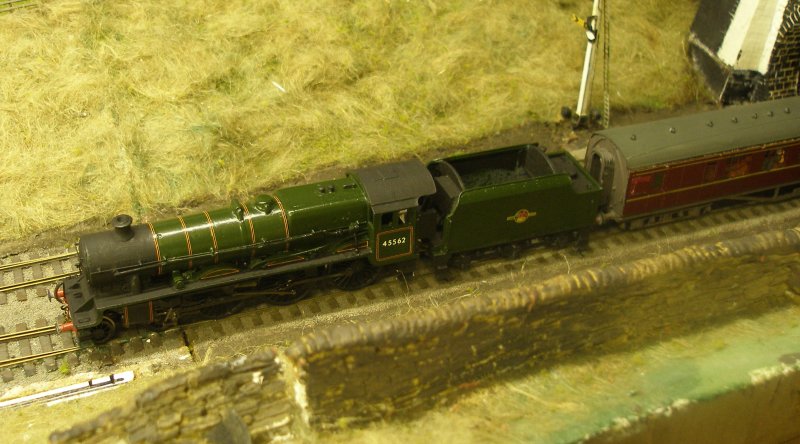
Oops, someone forgot to couple the loco to the train. For those who like to think that the train actual ran under its own power to create the shot can rest assured that this was, in fact, the case, as the loco propelled the train to this point!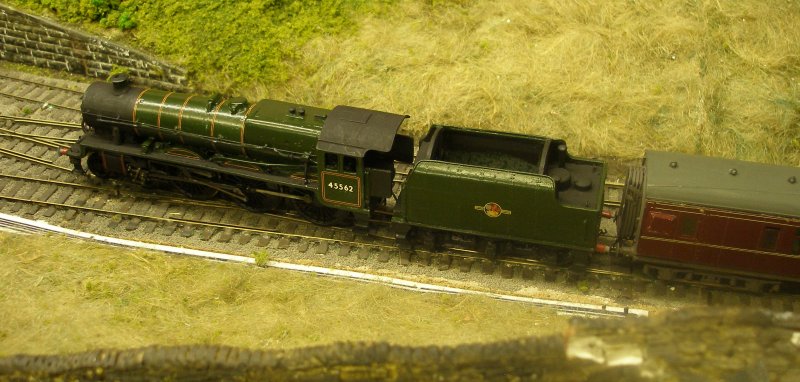
'Alberta' at the start of 1966 was just 'another' Jubilee based at Holbeck in Leeds. And then the Duke of Edinburgh came avisiting. One might have expected one of the new-fangled diesels to be chosen to stable the Royal train for the night, but Holbeck's shedmaster felt one of his Jubilees was perfectly suitable. And so it was that 'Alberta' was the last steam loco in revenue earning service to power the Royal train. This explains why in her last few months she became one of the cleanest Jubilees, and looks very smart on the excursions that she then operated in her last few months. As noted, these photos show her coupled to an unlined welded tender. However, on her last journey to the scrap yard she was stopped at Tyseley, and was photographed in the roundhouse there. This was to allow the Birmingham Railway Museum team to remove parts for 'Kolhapur'. The photograph very clearly shows that she is attached to a clean, unlined riveted tender. It isn't known when this substitution took place, and whether she actually ran with it in the last few weeks of service. But critically the combination is a genuine one. Final varnishing was with Ronseal satin.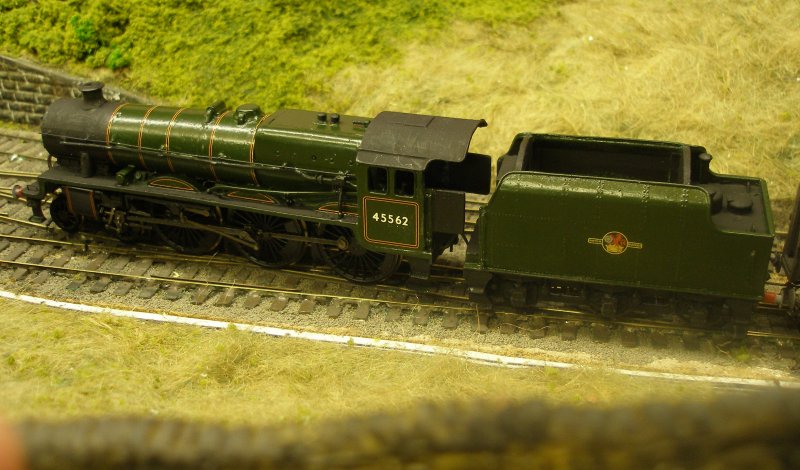
Finally, her ex-works photograph. The green is Pheonix Precision 'dull green' applied from a spray can outdoors on a warm summer's evening, and the transfers are by Fox. The ejector piping and reversing rod were sourced from an old Bachmann bodyshell. The handrail knobs and handrails are Gibson. The new smokebox door handles were from Markits. The new cab steps are Comet. Remarkably, all parts required to complete the loco, with the exception of the transfers and nameplates, were in stock! Final tweeking will see the tender more closely coupled and fall plates between cab and tender fitted. Incidentally, all the colour photos examined show the cab doors painted a gloss black, with the black of the cab roof also coming down to the edge, rather than the rain strip, as is sometimes seen on models. 